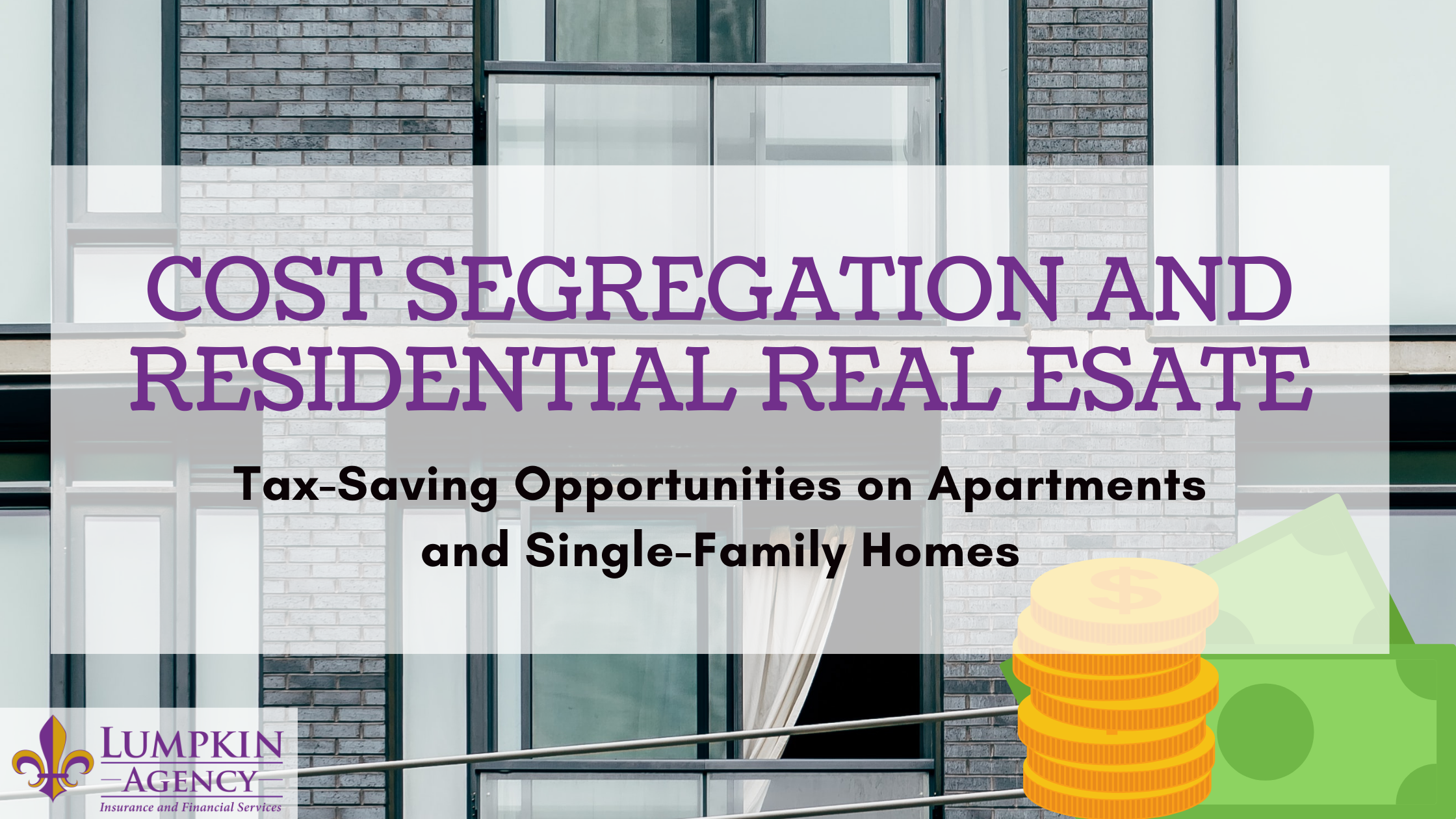Cost Segregation on Residential Real Estate
Interest in residential real estate has been on the rise, these properties provide a stable source of income for savvy investors. Just like any other income, proceeds from rent on residential real estate are subject to taxation. Those with one or more residential real estate projects are often interested in increasing their real estate deductions to reduce their tax burden.
One type of deduction common to all capital assets is called depreciation. Depreciation allows a taxpayer to write off the cost of an asset over its useful life. A commercial building such as an office or restaurant is depreciated using the straight-line method over 39 years. However, residential real estate —property that generates at least 80 percent of its income from dwelling units—depreciates using the straight-line method over 27.5 years.
Many taxpayers would prefer to have a larger deduction than that provided by the straight-line method. For example, a $500,000 residential rental property depreciating over 27.5 years would provide an annual deduction of about $18,000. A cost segregation study could result in a deduction of $100,000 in the first year of ownership.
Cost segregation works because an engineering-based study can identify parts of a building that can depreciate over shorter amounts of time, such as 5 years or 15 years. Under certain cases, the assets identified by the study are eligible for bonus depreciation, resulting in even larger deductions.
This article will review the tax-saving impact of cost segregation on residential rental property by exploring three real-life examples.
Cost Segregation on Apartment Buildings
A real estate investor approached our team in 2018 regarding a cost segregation study on an approximately $8 million apartment building with about 200 units. The building had been depreciating using the straight-line method since 2008. After reviewing our estimates, the client determined to move forward with a cost segregation study on the apartment complex.
Our cost segregation study was able to reclassify a large portion of the apartment site, including the parking, landscaping, and the brick and stone paving. These costs were reclassified as 15-year property. Within the apartments themselves, our study was able to identify the costs of cabinetry, moldings, specialty molding, specialty electrical, and other components, and to classify these costs as 5-year property.
In total, about 20 percent of the building cost was moved from the 27.5-year, straight-line method, into a more favorable recovery period such as five or 15 years. Our study allowed our client to claim an additional $887,470 in depreciation in the year the study was implemented. This additional depreciation would have equated to $328,364 in tax savings using the 37% maximum tax rate that was in effect at the time.
Cost Segregation on Single-family homes
A real estate investor approached us in 2020 regarding the impact of cost segregation on a $450,000 single-family home he was renting out. We conducted a feasibility analysis and the client decided to move forward with a cost segregation study.
The study was able to allocate a portion of the building cost to the driveway, landscaping, and mailboxes. These assets were moved into a 15-year recovery period. Additional building cost was allocated to flooring, cabinetry, and other components. These components were then assigned to a 5-year recovery period.
This client had placed the building in service after September 27, 2017, so he was able to take advantage of bonus depreciation and deduct the entire cost of the assets we had reclassified. The cost segregation study, combined with bonus depreciation, allowed the client to claim over $72,000 of additional depreciation in the year the study was implemented. This additional depreciation would have equated to $26,709 in tax savings using the 37% maximum tax rate that was in effect at the time.
Cost Segregation on a Portfolio of Real Estate
In fall of 2020, a client approached us with a portfolio of rental real estate including apartment buildings, duplexes, and single-family homes. All properties were depreciating using the straight-line method over 27.5 years. Some of the properties had been damaged in a natural disaster. The total value of the real estate portfolio was nearly $5,000,000.
We completed a cost segregation study on his portfolio of real estate, and the client was able to claim $645,563 in additional depreciation. This additional depreciation would have resulted in $238,858 in tax savings in 2020 at a 37% tax rate. The client was able to implement the study by filing a Form 3115
The overall cost of the study was a small fraction of the tax savings the study unlocked. The studies were extremely effective, despite the fact that the properties were older and did not, for the most part, qualify for bonus depreciation. The impact is even stronger on comparable properties place in service after September 27, 2017
For more illustrations of the impact of cost segregation, visit our cost segregation examples page.
Conclusion: A Tax-Saving Opportunity for Real Estate Investors
Anyone who owns an apartment, a duplex, or a single-family rental home is already claiming depreciation on residential real estate. But taxpayers that are still using the “default” 27.5-year, straight-line method of depreciation are missing out on a tax-saving opportunity. Cost segregation on residential real estate is an effective method of increasing deductions in the early years of ownership.
As more investors acquire residential rental properties as an investment, these investors are increasingly interested in real estate tax savings. The tax savings that result from cost segregation can be used to invest in property improvements, new properties, and more. Use our request a PA form to receive a no-cost evaluation of the tax-saving impact that cost segregation could have on your properties.
For more information please contact our Director of Cost Segregation at clayton@lumpkinagency.com.
The information provided in this blog is intended for general information only, and is not meant to constitute tax advice.



